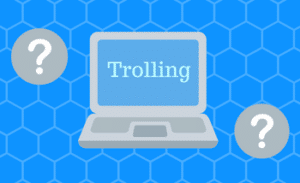Know Your Trolls: How to Identify Fake Reviews, Comments and Messages

 How to deal with trolls is big problem for many businesses and organisations. For a business that has recently taken the big leap into digital marketing and building an influential online presence, every interaction matters. It may be a more casual and laid back environment for meeting leads and customers, but businesses and their marketing teams are notorious for taking every exchange, comment, and response quite seriously.
How to deal with trolls is big problem for many businesses and organisations. For a business that has recently taken the big leap into digital marketing and building an influential online presence, every interaction matters. It may be a more casual and laid back environment for meeting leads and customers, but businesses and their marketing teams are notorious for taking every exchange, comment, and response quite seriously.
This is only natural because you’re not just chatting on the internet like everyone else, you’re building a reputation and awareness of your brand in the online communities. Comments on your blog posts, messages in social media, and the all-important Google Business reviews left by customers matter a great deal to each business. You take the time to evaluate these comments, take them seriously, and answer them considerately when it seems appropriate.
But what do you do when someone clearly says something dead wrong or so upsetting that they can’t possibly be serious? What can your marketing team do when a social media message asks if babies are a main ingredient in your line of frozen food or a business review suggests that they were kidnapped by one of your delivery drivers? This, friends, is something known on the internet world as “Trolling”. But I can help you to learn how to deal with trolls.
Everyone Gets Trolled
When you step into the online sphere, new rules apply that have nothing to do with the real world. Identities aren’t necessarily based on a person’s legal name and real life. Actions don’t have the same kinds of consequences and some people take a certain sick joy in causing any kind of problem they can see. These are the trolls, and everyone gets trolled. But you need to know how to deal with trolls.
BLOG: You're not alone - everyone gets trolled, learn how to tackle it! | #JSBTalksDigital Click To TweetTrolls look for and target emotional weaknesses. They bully people anonymously online, they post bogus information to see who gets fooled, and they exploit predictable thinking just to cause internet drama. Perhaps the best way to understand trolls is to know the very first rule of the internet survival: “There are no girls on the internet”.
This isn’t about sexism or even gender. There are plenty of women online. Most of the women in today’s culture are online. What the rule means is that; if there is someone who seems to be perfectly formulated to be attractive to you, who seems to want to ‘hook up’, they are more likely to be a troll looking to cause emotional damage, than a real person ready for a date.
How does this apply to your business? Just as the trolls know most people are seeking easy online love, they also know that companies are deeply invested in building leads and the good opinions of their customers. So naturally, they will use this to target and mess with companies the same way they would target and bother individuals. Read about overcoming negativity here.
Knowing When You’re Being Trolled
Trolls like to really bother someone. They know they’ve won their little game when they see an emotional reaction. In order to get that kind of reaction, they tend to target people who are in a position to really care. They take on the persona of whoever’s opinion you care most about and say something you’ll want to argue with. Trolls like to see people react strongly to a fake person or strawman.
While you could simply guard yourself against ever giving a strong reaction, ideally you will be free to give your genuine response to people who have real arguments or emergencies while also effectively ignoring trolls who try to start embarrassing arguments or raise false alarms. If you want to form an advanced strategy as a company that lives half on and half off the internet, the best approach is to detect when you are being trolled and deal with it in a graceful way that makes the company look good.
Trollish Social Media
Social media is where people go to troll each other, even friends trolling friends they know in person. There are a remarkable number of people going by aliases and socializing as ‘alt’ accounts that have no connection with their real identity. The problem is that everyone does this and it’s not always to troll. Sometimes it’s to allow themselves to be more outgoing, funny, or creative as their online persona and many of your legitimate online community will be going by aliases with non-photo avatars.

This means that the only way to tell the difference between a troll and a real audience member is your history with the account and how ridiculous the interaction is objectively. Watch out for anything that seems to be getting out of hand with a person who won’t modulate their belligerent standpoint for any reason. This might be a persistent debate, someone who gets unreasonably upset about typos, or someone who seems to be able to be offended by everything. Real people will concede some points but stand their ground if they really are adamant about correcting something they disagree with. Trolls will just hold up their strawman to see how long you’ll fight it.
When this happens, simply back away politely. Calmly agree to disagree and stop interacting. They will probably rave at the emptiness for a little while then get bored and move on. Don’t be surprised if a troll ignored once comes back a few times to see if they can use that groundwork to stir up more trouble but politely ignoring a troll is almost always the best approach in social media and other conversational environments.
How to Deal with Trolls in Business Reviews
Business reviews are taken very seriously because they have such a profound impact on how new customers and leads will respond to your brand and reputation.
What should you do if someone trolls you in a business review? | #JSBTalksDigital Click To TweetThis is especially true for any business with a brick and mortar element because each venue is reviewed separately to note the quality of the local staff and venue. Fake, hurtful reviews are a clear hallmark of the modern troll. These can be random vicious acts, someone associated with your competition, or even someone who read your business name off the back of your truck and didn’t like the way you changed lanes. These reviews usually claim to be customers you never served who had a “horrific experience” at your venue.
Bad fake reviews can come from a lot of different places and only some online platforms have the right tools to identify, flat, and remove them. Whether or not you can get a removal in the works, your best immediate response to troll reviews of your business is a calm and even one. Try “killing with kindness” by treating the troll the same way you would someone who seemed to have genuinely had a bad experience and then accidentally rated the wrong business.
Be helpful and considerate, then feel free to move on. This under-reaction will take the wind out of their sails because it’s clear you aren’t going to get flustered by the bad review. It also gives you a chance to show off your customer service savvy and is likely to earn the amusement and appreciation of future customers who come to read your review history.
Trollish Customer Service Calls
Finally, there is the kind of troll businesses have been familiar with for decades. There have always been people who prank call customer service. As communication becomes more unified and digital, this phenomenon has spread to every platform of customer service. However, the one unique factor of the kind of trolls who target customer service is that these are also more likely to be trying to scam the company as well. Consider the “customer” who calls in about something trivial then immediately claims to take offense at how the phone agent speaks to them. They demand to speak to a manager, proclaim how offended they are, then demand a 50% discount on their next order as compensation for their emotional pain. They may also try to get the first agent fired out of spite.
This kind of classic scam artist call has been massively multiplied over customer service live chat, texting, social media, email, and also still on the phone lines. Any kind of customer service is seeing its fair share of scammer trolls. Fortunately, technology is here to help with this one. A well-kept CRM and buying history means it’s easy to prove who is and who is not a verified purchaser. Chat archives and call recording make it possible to check concrete evidence of how an employee conducted themselves versus what the customer said. Lying to managers and in reports is no longer as easy as it used to be meaning service agents and their managers can be a consistently unified team against scam trolls. Anything you can’t immediately prove is false can instead be cross-referenced until you have enough information or you can ask the scam artist to jump through a hoop or two to run out their patience.
One-Size vs Custom Responses
Once you’re able to identify when you’re being cyberbullied, the trick is knowing exactly how to deal with trolls. One-size-fits-all responses are a great backup plan to start with because they allow you to never commit too much to an interaction and simply stay away from blanket risky topics. A one-size response policy might be simply backing away from any interaction that brings up political, violent, or sexual views. You may advise anyone who brings these things up to reference a specific contact email within your company to address a serious problem which will take the discussion off the public forum and provide a legitimate avenue for people who happen not to be trolling.
A custom response, on the other hand, is when you see a better path than what your one-size response has to offer. If, for instance, you see a comment meant to evoke an argument as an opportunity to say something clever and even-handed about your business policies, do so! If ever you can turn a troll’s histrionics to your benefit by making you look good in comparison, take the opportunity. A custom response could also make allowances for when a legitimate customer has a special need that can be discussed safely without a troll fight.
The best way to navigate your online company reputation is to know the difference between being trolled and real customer exchanges. Once you can do that, it will be easy to keep your interactions genuine and pleasant despite the efforts of those who enjoy and seed strife. For more information about reputation management in the digital world, contact us today.







Hassan
Thanks, Joanne for sharing this useful details with us. As you know better than me that today’s there are many bots in the market who makes fake comments and send messages. But after this article now I have to come to know that how to deal with this.